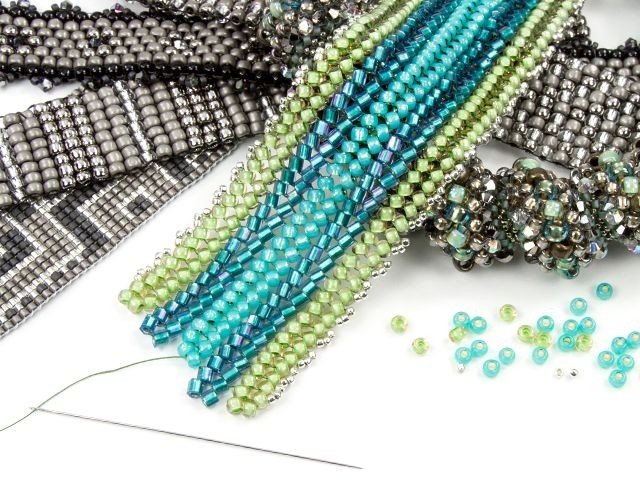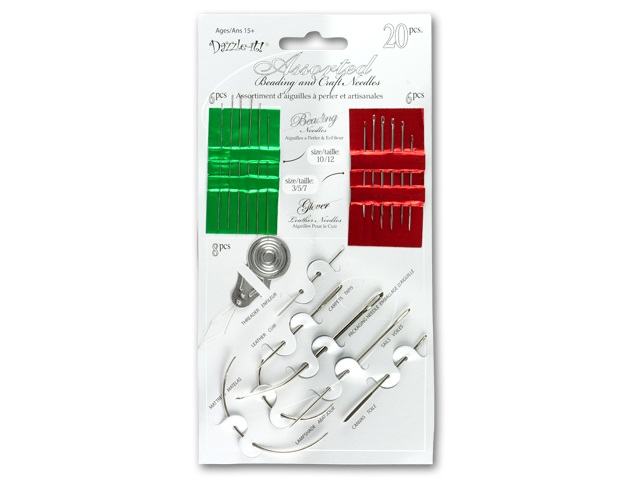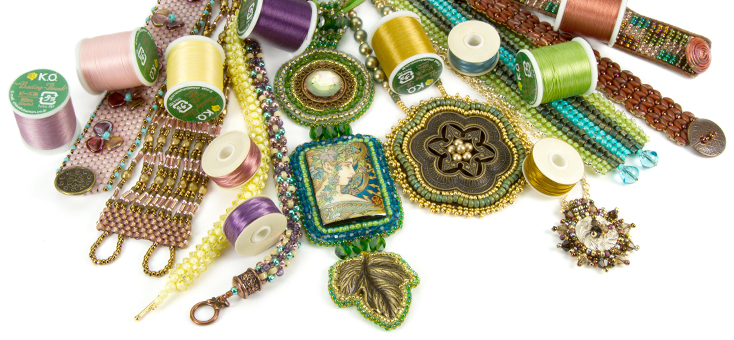Needles for Beading

Beading needles are essential for seed bead projects, as they make it easy to add those tiny beads to your thread. If you're new to bead weaving or embroidery, you might be wondering which needles are right for you. When choosing needles, you must consider the right size and type of needle you'll need for your project. There are various sizes and styles of needles to choose from, and generally you do not want to use just any regular sewing needle because they're not always the right size for beading. Beading needles also feature narrower eyes than sewing needles, so a bead can be passed through with ease. You'll want to choose needles based on the types and sizes of the beads and thread you're using, as well as how many passes you'll need to make through the beads during the project.

Beading Needle Sizes:
Beading needle sizes are like bead sizes – the larger the number, the smaller the diameter of the needle. The size has nothing to do with the length of the needle, but actually describes the width of the needle's eye. Smaller needles with a larger size number are ideal for stitching with smaller beads, especially for multiple passes through beads. In general, a needle's size number corresponds to the same or similar bead size number. The beading needle you choose has to be the right size to fit over the smallest beads in your project. Take a look at some of our suggestions for what stitches and bead sizes to use with the different needle sizes:
- Size 10 needles work well for peyote and brick stitch, netting, and loom weaving. They are a wonderful option for using with 8/0 and 11/0 beads.
- Size 12 needles are great for all off-loom stitches as well as loom work. Use them with 8/0, 11/0, and 15/0 beads.
- Size 13 needles can be used with all off-loom stitches and in loom work. They are especially useful for right angle weave or spiral ropes. Use this size with 15/0 seed beads.
- Size 15 needles work for all off-loom stitches and loom work. Again, this is a great option for right angle weave or spiral ropes. This is a good size for using with small antique seed beads.
Long and Short Beading Needles
Even though the number size of a beading needle has nothing to do with its length, there are still long and short options for beading needles. Longer needles are helpful in handling more beads per stitch or in making multiple stitches on the pass. They are also helpful for stringing. Shorter needles are ideal for using in stitches that require passing through one or two beads at a time, as they allow for more control. Shorter needles are also less likely to break in the course of a project.
Should Beading Needles Be Sharp?
Beading needles can feature different styles of tips and you'll want something smoother or sharper depending on what type of work you are doing. Smoother, slightly rounded tips help avoid splitting thread when bead weaving. Sharper tips make it easy to run smoothly through fabric. You should also know that beading needles that are called "Sharps" may not actually refer to a sharper point. The name refers to their shorter length.
Types of Beading Needles
Once you've figured out the different sizes and lengths of beading needles, there are still all of the different types to consider:
- English beading needles: These needles are long, thin, and flexible. They're perfect for bead embroidery and weaving projects where passing through multiple beads is a must. Because they are so flexible, they tend to curve the more you use them, which can be a desirable trait to some beaders. The most commonly used sizes of English beading needles are sizes 10 and 12.
- Japanese beading needles: We offer Tulip Japanese beading needles. Tulip is the largest producer of needles in Japan, with a rich history of needle-making. These needles are renowned for their high-quality and are available in similar sizes and styles to the English versions. They are very smooth, so they won't snag on fabric or thread. They are stiffer than English beading needles, too.
- Big eye needles: These types of needles make threading very easy! The entire needle opens up down the center, allowing for any type of stringing materials. They are thicker than English beading needles and are best used for stringing projects, crocheting and knitting with beads, working with stretch cord, and more. You can see how they work in this video.
- Twisted beading needles: These needles feature flexible strands of twisted wire and a large eye. They are often used for stringing pearls and gemstones onto silk cord. Griffin silk cord comes with this type of needle attached.

Now that you know what types of needles we offer and how to determine what size and length you need, you can confidently choose the perfect needles for your next projects. Remember, the right needle will make beadwork easier and prevent broken beads, making you a happier beader! If you need help choosing the perfect thread for your next project, check out our page all about stringing materials.
